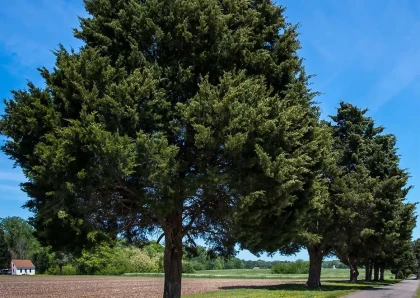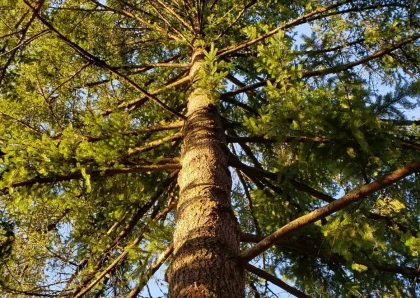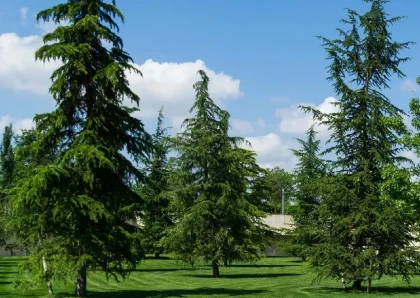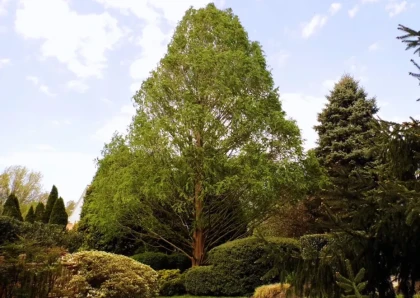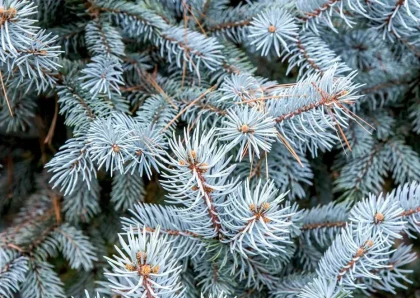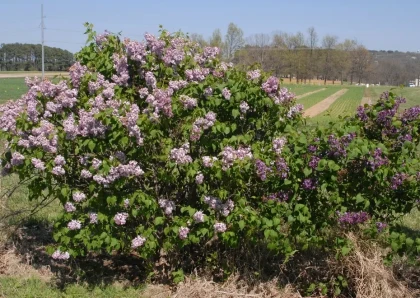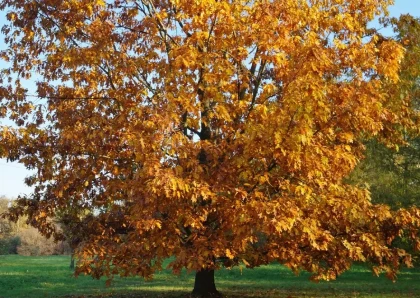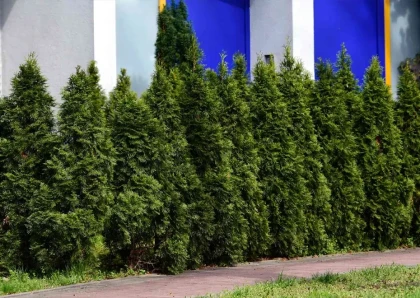
Korean Pine
Overview
Korean Pine (Pinus koraiensis) is a remarkable evergreen conifer that holds significant ecological and cultural importance in northeastern Asia. It is primarily found in regions such as Korea, China, and parts of Russia. This slow-growing, medium-sized tree can reach heights of 40-80 feet (12-24 meters) with a straight, sturdy trunk.
Korean Pine is known for its distinct features, including its dense, dark green foliage and its ability to produce large, nutritious pine nuts. The tree's needles are arranged in clusters of five, measuring around 2-4 inches (5-10 cm) in length. These vibrant needles create a lush canopy, providing shade and shelter for various wildlife species.
One of the notable qualities of Korean Pine is its production of edible pine nuts. These nuts have a mild, slightly sweet flavor and are widely used in cooking, baking, and confectionery. They are an essential ingredient in many traditional Korean and Asian cuisines, adding a delightful crunch and nutty taste to dishes.
Due to its desirable qualities, Korean Pine wood is highly valued. The timber is versatile and used in various applications, including furniture, cabinetry, paneling, and flooring. The wood's durability, fine texture, and attractive grain patterns make it sought after by craftsmen and woodworkers.
What are the different types of Korean Pine?
There are two main types of Korean pine:
- Typical Korean pine: This is the most common type of Korean pine. It has a narrow, pyramidal shape and grows up to 100 feet tall.
- Dwarf Korean pine: This is a smaller variety of Korean pine that grows up to 30 feet tall. It is often used as an ornamental tree.
Different types of wood products can be made from Korean Pine?
- Furniture: Korean pine is a popular choice for furniture because it is strong, lightweight, and easy to work with. It is often used for making chairs, tables, and other pieces of furniture that require a smooth, finished surface.
- Cabinets: Korean pine is also a good choice for cabinets because it is resistant to warping and shrinking. It is often used for making kitchen cabinets, bathroom cabinets, and other types of cabinets that are exposed to moisture.
- Paneling: Korean pine is a good choice for paneling because it is relatively inexpensive and easy to install. It is often used for making walls, ceilings, and other interior surfaces.
- Flooring: Korean pine is a good choice for flooring because it is durable and easy to maintain. It is often used for making hardwood floors, decks, and other outdoor surfaces.
Benefits of Korean Pine
- Edible Pine Nuts: Korean Pine produces large, tasty pine nuts that are used in cooking and enjoyed as a nutritious snack.
- Ornamental Beauty: Korean Pine's dark green, dense foliage and symmetrical shape make it an attractive addition to landscapes and gardens.
- Wildlife Habitat: The tree provides habitat and food for various wildlife species, including birds and small mammals.
- Environmental Impact: Korean Pine contributes to the overall health of forest ecosystems, helping to prevent erosion and promoting biodiversity.
Cons of Korean Pine
- Slow Growth: Korean Pine has a slow growth rate, requiring patience when establishing it in the landscape.
- Size Considerations: It can grow to a substantial height and width, which may be a limitation in smaller garden spaces.
- Environmental Suitability: Korean Pine is best suited for cool to cold climates and may not thrive in areas with hot summers or prolonged drought.
Tips for planting and maintaining Korean Pine
- Location: Plant Korean Pine in a site with well-drained soil and full to partial sun exposure.
- Watering: Provide regular watering during the tree's establishment period. Once established, it is relatively drought-tolerant but benefits from occasional deep watering during dry periods.
- Pruning: Minimal pruning is required for Korean Pine. Remove any dead or damaged branches as necessary, and avoid heavy pruning, which can negatively impact the tree's shape and growth.
Conclusion
Korean Pine is a beautiful, slow-growing tree that offers both aesthetic and practical benefits. Its attractive appearance, production of edible pine nuts, and environmental contributions make it a valuable addition to landscapes and forests. Korean pine is susceptible to a variety of pests and diseases. These can damage the tree and reduce its lifespan. Korean pine is not as cold-hardy as other pine species, such as Norway spruce. It is not recommended for planting in areas with very cold winters.
FAQs
- Can I grow Korean Pine in a small garden?
- Are Korean Pine nuts commercially available?
- Can Korean Pine tolerate cold winters?
Korean Pine can be grown in smaller gardens, but it is essential to consider its ultimate size and provide adequate space for its mature growth.
Yes, Korean Pine nuts are commercially available and are used in various culinary applications.
Yes, Korean Pine is well-adapted to cold climates and can tolerate freezing temperatures.
No listings available
Related Products
Questions & Answers
What do you want to know about this product?
Reviews (3)
WiseWoodlander21
A Timeless Icon of Wisdom
Planting the Korean Pine connected me to ancient traditions, and its longevity symbolizes the wisdom of nature.
CraftyArborist55
Aesthetic Beauty with Lasting Value
The Korean Pine's graceful form and durable wood make it a versatile choice for both ornamental and woodworking purposes.
FrostyForester12
Nature's Cold Climate Champion
The Korean Pine's resilience in extreme temperatures showcases its adaptability, making it a reliable choice for colder regions.




